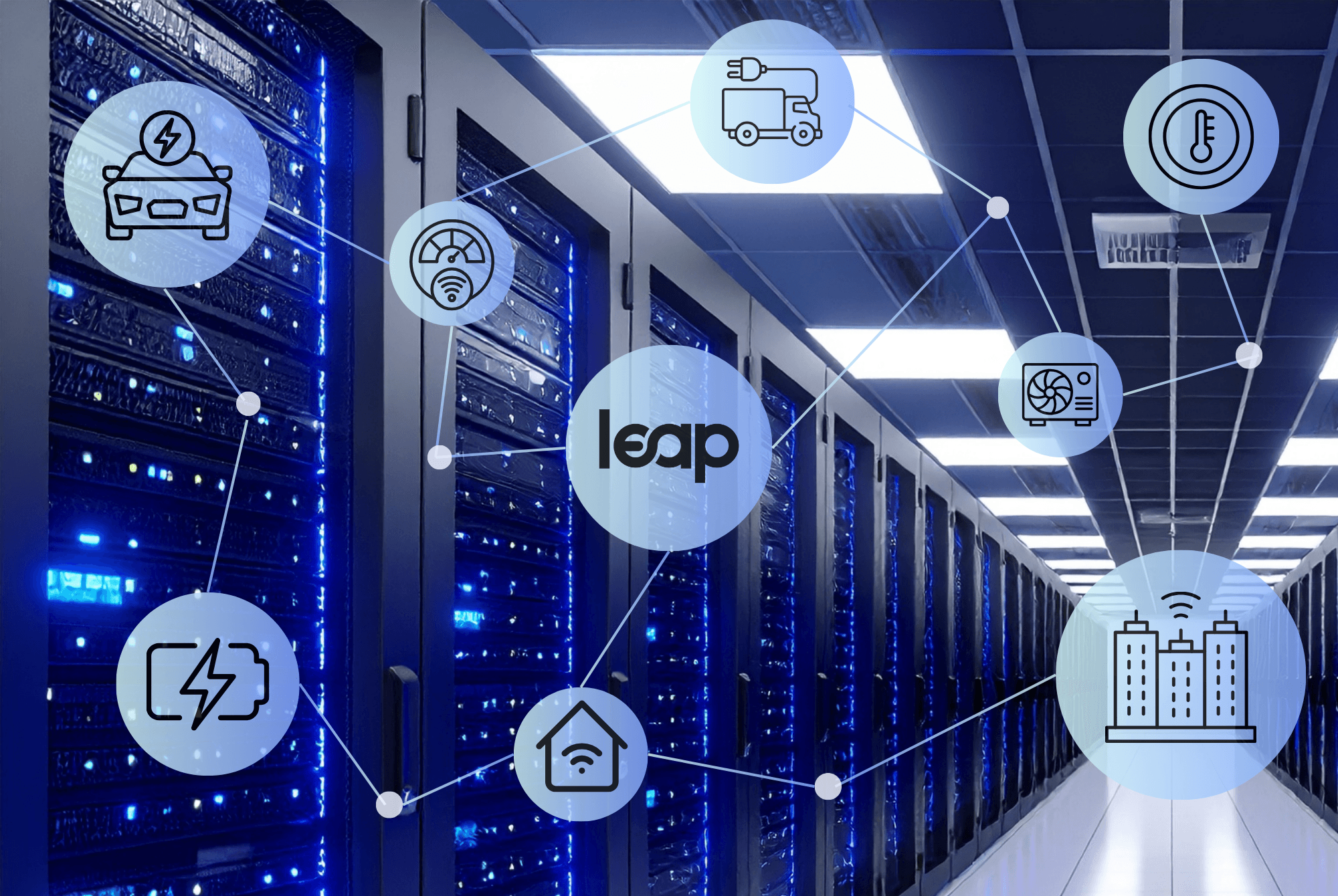April 20, 2023
The theme of Earth Day 2023, “invest in our planet,” deeply resonates for Leap because we’re building a climate solution to invest in the long-term resilience and sustainability of our energy system and empowering our partner companies and thousands of end users to be a part of it. To date, Leap has abated over 1,400 metric tons of carbon dioxide (CO2) emissions in California alone, while creating new revenue streams for energy technology providers.
The electric power sector accounts for a large share of global greenhouse gas emissions (around 30% of CO2 emissions in the U.S., according to the Energy Information Authority), so investing in innovative solutions that can accelerate the decarbonization of the electric grid is instrumental to reach net-zero. We’re seeing more interest than ever in the potential of virtual power plant (VPP) solutions like Leap’s to combat climate change. Today, we’ll explore how virtual power plants are powerful tools to address both climate mitigation and climate adaptation challenges.
Virtual power plants are grid-integrated portfolios of distributed energy resources (DERs) aggregated across hundreds or thousands of households and buildings to offer flexible support to electric grids. Leap aggregates the battery storage systems, electric vehicle (EV) chargers, smart building systems and other DER technologies enrolled on its platform to supply VPPs in energy markets across the United States, sharing the revenue earned with its technology partners.
Climate mitigation
VPPs help mitigate climate change by reducing the carbon intensity of the grid when it matters most. When demand for electricity rises, grid operators have to fire up additional power plants to meet that additional demand. Grid operators dispatch power plants based on cost and efficiency, with the most polluting power generators typically being the most expensive and least efficient options to deploy. When electricity demand rises, emissions rise as well, since grid operators must rely on increasingly heavily-emitting energy sources to balance the grid.
VPPs can play an important role in disrupting this polluting status quo. Instead of firing up an additional fossil fuel-powered generator to meet an increase in electricity demand, grid operators can call on VPPs to reduce energy usage or export energy back to the grid. By activating aggregations of DERs in targeted areas during periods of high demand, VPPs help reduce the need for fossil fuel-based power generation. VPPs enhance grid flexibility, which is crucial to enable faster integration and higher penetrations of clean energy sources to power the grid.
Climate adaptation
As climate change causes extreme weather events to become more frequent and intense, virtual power plants can help make the grid more resilient to power disruptions. Acute heat waves and cold snaps cause prolonged spikes in electricity demand, which can lead to blackouts when demand outstrips supply. VPPs help communities adapt to the rise of extreme weather events by reducing peak load and stabilizing the electricity system to prevent outages during grid emergencies.
During last September’s historic heatwave in California, the state asked individual energy users to voluntarily reduce their electricity consumption in order to avoid blackouts. Although these voluntary energy conservation efforts successfully helped stave off outages during the heatwave emergency, grid operators couldn’t know for sure if enough energy users would participate to shore up the grid. Relying on homes and business for manual, altruistic energy reductions without compensation is a risky approach.
VPPs ensure a more reliable response from demand-side energy resources. Through grid services programs, flexible energy loads are compensated in energy markets similarly to traditional power plants. VPPs create opportunities to monetize DERs and automate participation so that demand-side resources reliability show up to support the grid.
As more and more DERs are installed in households and businesses, virtual power plants are becoming increasingly compelling as climate solutions that can also unlock new economic value for technology companies and energy users. By harnessing the full potential of DERs to provide flexible support to the grid, VPPs can help to reduce greenhouse gas emissions and improve the resilience of electricity systems around the world.
Technology companies can bolster their businesses, drive growth and achieve their sustainability goals through Leap’s virtual power plants. To learn more, schedule a demo.


